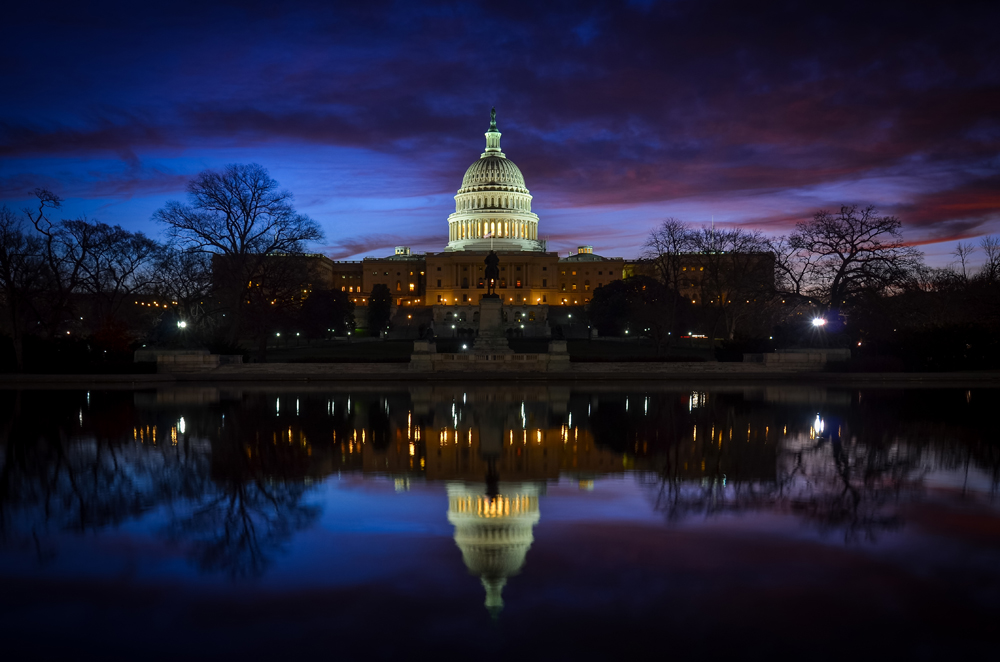
Perhaps nothing makes people run for the hills faster than the prospect of a meaty discussion about federal appropriations of funding for the federal government. At least that what happens whenever I try to talk to my friends about it. But keep your seat for a minute.
Here’s why the federal budget and appropriations process matters. Maybe you’d rather think about what more we need to do to control water pollution. Or you’ve seen headlines about challenges in drinking water like PFAS chemicals and want to focus on addressing this issue. The decisions Congress makes on the federal budget will determine whether those issues and others you care about are addressed and whether programs are carried out well.
As has become more common over the last decade, the federal government is currently operating on a “Continuing Resolution.” That means that the U.S. Congress couldn’t complete the full “appropriations” process to create a new budget for Fiscal Year 2022 (which began October 1, 2021) so they passed a temporary measure to keep the government running. Actually they passed two already! While far preferable to a federal government shutdown, which happened twice during the Trump administration, this is not the way to improve federal government function. Plus that means agencies like EPA are operating on a budget approved during the Trump administration, which is far lower than what EPA actually needs to do its job.
Committees in the U.S. House and U.S. Senate have done the work that leads to finalizing the Fiscal Year 2022 federal government spending bill but Republicans, currently the minority in both chambers, have not yet agreed to come to the table and move the process forward. This is irresponsible and directly affects efforts to reduce water pollution and improve drinking water quality.
Two examples:
PFAS Chemicals: Widely used in fire-fighting foam and ubiquitous in products of every kind, these chemicals have been found in rivers, lakes, and streams around the country and in both surface and underground sources of drinking water. Every day we learn more about their negative health impacts even at low levels. One important question to answer is how much of which PFAS are already in our drinking water sources? Under a Safe Drinking Water Act program meant to answer this question about unregulated contaminants (the “Unregulated Contaminant Monitoring program” or “UCMR”). Starting in 2023, regulated Public Water Systems will test for 29 PFAS chemicals over a 12-month period between January 1, 2023 and December 31, 2025. Usually, UCMR testing for systems serving between 3,300 and 10,000 people (over 5,000 systems) is paid for by EPA and conducted at a representative sample of systems. In the 2018 America’s Water Infrastructure Act, Congress directed EPA to do this monitoring at all systems of this size and to cover all the costs, “depending on appropriations.” Among the many items included in EPA’s budget request for Fiscal Year 2022, and in the bills prepared by Congressional appropriators so far, is funding for the first year of this monitoring.
So take a breath and let’s recap. There is enormous concern about PFAS chemicals in drinking water. One small but important part of answering questions and solving all of the problems posed by PFAS chemicals is to learn more about where they are already present in drinking water. Congress thought we should monitor at more systems, but systems serving between 3,300 and 10,000 people, won’t all participate unless EPA is operating under a final fiscal year 2022 appropriations bill.
New Investments and Initiatives: The recent Bipartisan Infrastructure Law puts in motion significant new investment in water infrastructure, and includes much-needed funding for drinking water and wastewater system upgrades. However, getting that money where it needs to go relies on EPA staff increases that are part of the Fiscal Year 2022 budget. New infrastructure investment is just one example of big new initiatives that EPA must lead.The President’s Executive Order directing all agencies to incorporate environmental justice into their activities and the Justice-40 Initiative to ensure that 40% 40 percent of the overall benefits of federal climate, clean energy, affordable and sustainable housing, clean water, and other investments go to disadvantaged communities that have been historically marginalized, underserved, and overburdened by pollution are impressive and needed commitments. But EPA needs additional resources to accomplish these goals.
Because meeting this moment to make progress on clean water, climate change, and numerous other important issues requires us to address outdated federal funding levels, including for EPA, we joined other environmental organizations on a letter urging Congress to act quickly to finalize the Fiscal Year 2022 appropriations.



